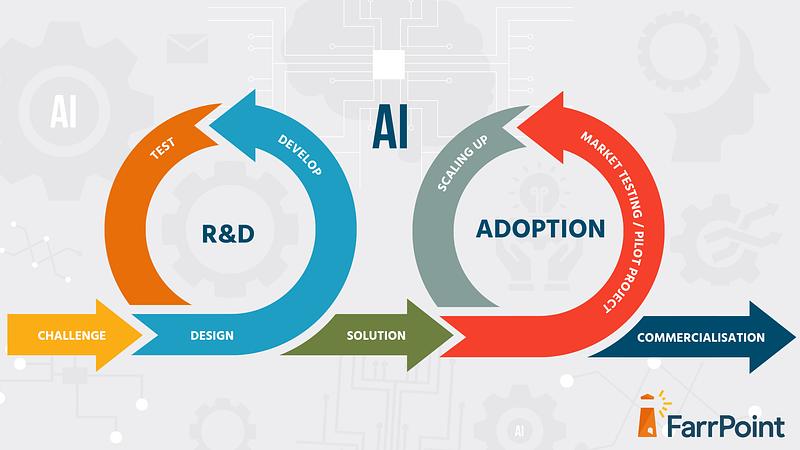
Author: Matthew Izatt-Lowry, Head of Economics at FarrPoint
.png)
With the launch of (this will open in a new window)AI Growth Zones and a renewed focus on (this will open in a new window)public sector innovation, the opportunity to turn AI research into real-world impact has never been greater. But to do this effectively, we need to think about two powerful, interconnected cycles: Research & Development (R&D) and Adoption, and ensure they are driven by real demand.

The R&D cycle (Challenge → Design → Develop → Test → Solution) is where public sector innovation begins. But to be effective, it must be demand-driven. That means starting with real-world problems - like local authority productivity, NHS waiting lists, energy efficiency, or local transport network design - and designing AI solutions to directly address them.
There's a lot of work already being done to ensure that AI research is grounded in public need, not just technical possibilities, like in (this will open in a new window)this example. Such an approach ensures that public investment in R&D leads to solutions that are not only innovative but also usable, ethical, and impactful. And if a solution isn't used, it doesn't deliver impact.
The Adoption cycle (Pilot → Scale → Commercialise) is where AI delivers real value to communities and businesses. This is where AI Growth Zones come in. These zones are designed to fast-track the deployment of AI infrastructure and services. By focusing on demand-led pilots - such as AI for advanced manufacturing, robotics, and advanced computing, to drive economic growth and also improve public service delivery - local authorities can test what works, scale what’s proven, and attract private investment to commercialise solutions that meet local needs.
By linking R&D and Adoption, and grounding both in demand-driven investment, the UK public sector can ensure that AI isn’t just a buzzword. It has the potential to become a tool for better services, smarter spending, and inclusive economic growth.
As recent (this will open in a new window)research has shown, the future of AI in democratic societies depends on how we choose to develop and deploy it. The UK has a chance to lead it - not just in AI capability, but in real AI impact.
At FarrPoint, we take a pragmatic approach, ensuring there is a strong connection between local needs and the solutions we design and implement for long-term impact.
Working with both public and private sector clients, we help them develop sustainable, mission-driven investments that reduce risk, ensure feasibility, and promote the long-term sustainability of AI.
To learn how FarrPoint’s demand-driven approach can help you identify the right challenges and develop solutions that deliver long-term value, get in touch.
Connectivity is important. It drives business and society, bringing communities and commerce together. That's why we use our insight and experience to connect people and business.